Showing 25–36 of 297 results

Highlighting the tenets of Sri Vallabhas Brahma-Vada, the book spells out his views of Ultimate Reality (Brahman/Krsna), Individual Soul (Jivatman) and the Phenomenal World (Jagat) and his concepts of Aksara Brahman and Pusti Bhakti.
Stirred on, perhaps mystified, by Natures grand design, the Vedic seers pondered upon the nature of Ultimate Reality: Brahman, and how it is related to Man and the World. Over the time, these early reflections turned into profound, intricately metaphysical discussions, even polemics. And the dialogue continued vigorously in the post-Upanishadic period leading to the emergence of many spiritual-metaphysical schools of thought, represented notably by Gaudapadas Ajata-Vada, Shankaras Advaita (Kevaladvaita), Bhskaras Bhedabheda-Vada, Ramanujas Vishishtadvaita, Madhvas Dvaita, and Shripati Pandits Dvaitadvaita (also called Shakti Vishishtadvaita). Dr. Tagare here tries to locate Shri Vallabhacaryas worldview in this centuries-long discourse on Brahman. A highly erudite, Telugu brahmin, the great Acarya Shri Vallabha: 1478(?) – 1530 ad, was not only involved in the metaphysical niceties of the Brahman-related dialogue, but also came to develop his own doctrine, called Shuddhadvaita which, literally meaningpure advaita, views Brahman as pure (shuddha) Karya-Karana- Rupa: the cause and effect (of the universe), without the least mix of maya. Highlighting the tenets of his Brahma-Vada, the book spells out Shri Vallabhas views of Ultimate Reality (Brahman/Krishna), Individual Soul (Jivatman), and the Phenomenal World (Jagat), together with his concepts of Akshara Brahman and Pushti Bhakti. The author charts the historical development of Brahman-Vada, underscoring therein the uniqueness of Shri Vallabhas position. And also the relevance of his message of Bhakti-Karma-Samuccaya to the distraught, tension-ridden world of ours.
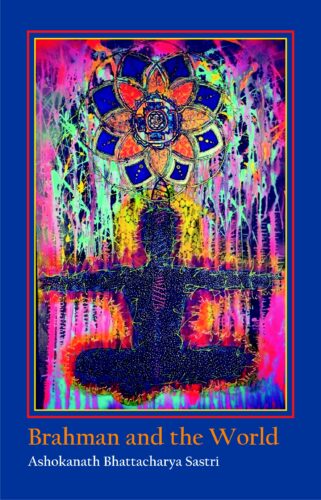
The Ved?nta has been rightly called the Finest Fruit of Indian Thought and the Upani?ads as the Finer Flowers. Ved?nta grows out of the teachings of the Upani?ads and passes into the various systems in the writings of ?a?kara, Bh?skara, R?m?nuja, Madhva and Vallabha, the great founders of Advaita, Bhed?bheda, Vi?i???dvaita, Dvait?dvaita and ?uddh?dvaita, respectively. However, there is a perception among Orientalists that while the Upani?ads favour the Monistic doctrine, B?dar?ya?as Brahmas?tra fundamentally opposes it on some of the most crucial points.
The book thus delves deep into the philosophies of both B?dar?ya?a and ?a?kara in enunciating the essential features of Brahman and Its association with the world. It thus discusses topics such as what sort of cause Brahman is?, and what sort of material causality is to be ascribed to It? It also addresses the conflicting views on the nature of Brahman like that of Vivarttav?da and of R?m?nujas Sagu?a-Brahman.
This book proposes to take up the question of Universal Causation to examine thoroughly as how far it is right to regard Brahman as the Universal Cause and how far s?trak?ra himself lent his support to each of the inter-conflicting schools of Ved?nta. This book should, therefore, benefit all who are devoted to the philosophic teachings of Advaita Ved?nta and its preceptors.
“The Vedānta has been rightly called the Finest Fruit of Indian Thought and the Upaniṣads as the Finer Flowers. Vedānta grows out of the teachings of the Upaniṣads and passes into the various systems in the writings of Śaṅkara, Bhāskara, Rāmānuja, Madhva and Vallabha, the great founders of Advaita, Bhedābheda, Viśiṣṭādvaita, Dvaitādvaita and Śuddhādvaita, respectively. However, there is a perception among Orientalists that while the Upaniṣads favour the Monistic doctrine, Bādarāyaṇa’s Brahmasūtra fundamentally opposes it on some of the most crucial points.
The book thus delves deep into the philosophies of both Bādarāyaṇa and Śaṅkara in enunciating the essential features of Brahman and Its association with the world. It thus discusses topics such as what sort of cause Brahman is?, and what sort of material causality is to be ascribed to It? It also addresses the conflicting views on the nature of Brahman like that of Vivarttavāda and of Rāmānuja’s Saguṇa-Brahman.
This book proposes to take up the question of Universal Causation to examine thoroughly as how far it is right to regard Brahman as the Universal Cause and how far sūtrakāra himself lent his support to each of the inter-conflicting schools of Vedānta. This book should, therefore, benefit all who are devoted to the philosophic teachings of Advaita Vedānta and its preceptors.”

The volume contains scholarly essays that make an in-depth study of Buddhist logical theory in the background of Buddhist epistemology. Two crucial philosophical concepts: trairåpya and apoha have also been discussed, besides the contributions of the leading Buddhist scholars like Diïnàga and Dharmakãrti.
The history of Buddhist logical and epistemological theories constitutes an interesting study for Buddhist religious scholars and philosophers.
This volume contains scholarly essays, presented at a seminar, that make an in-depth study of Buddhist logical theory in the background of Buddhist epistemology. Scholars from different parts of the world combine historical and philological scholarship with philosophical acumen and linguistic insight to examine the issues relating to problems of inductive logic and the problem of meaning and the universals. They also address the crucial question regarding the relevance of logical theory to Buddhism, especially to the philosophical soteriology such as Madhyamika. Using both Tibetan and Sanskrit texts to delve deep into the logical issues and philosophical questions, they focus attention on two crucial philosophical concepts: trairupya or the triple character of evidence, and apoha its meaning as exclusion. They examine the contributions of Buddhist scholars of yore in this regard, such as that of the Buddhist master Dinnaga and his general theory of inference, and in particular, his Hetucakradamaru, a study of propositions; Dharmakirti, particularly his theory of inference and definition of points of defeat; besides Shantarakshita and Ratnakirti.
The volume, offering original perspectives based on detailed study of ancient texts and their interpretations, will prove an informative source for scholars of Indology, particularly those involved in Buddhist religion and philosophy.
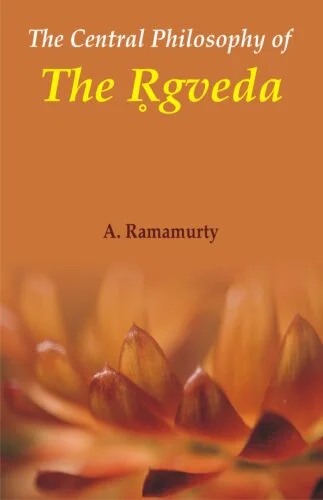
The book deals chiefly with the Rigvedic concept of divine, and the mode of divine revelation to the Vedic seers. It is a work of its kind in the field of Vedic Interpretation and offers a new perspective and direction to understanding the meaning of Vedic thought and symbolism.
Rigveda, a collection of hymns which are primarily prayers and praises addressed to various deities, is a religious/spiritual classic which influenced the formation and development of Indian way of life and culture. The concept of divine is central to it. The meaning of divine though has undergone significant changes in the long history of Hinduism depending upon its interaction with other world religions, the basic Vedic idea of divine still remains central to the Hindu concept of divine or God.
In this work we discuss mainly the meaning of divine and the mode of its revelation to the seers of the Rigveda in the state of divinely inspired devotion. This is what the Veda reveals or says about itself. To understand this claim of the Veda requires a deep understanding of the Vedic symbolism employed in communicating the meaning of divine inspiration. The seer-poets resort to symbolic use of language to communicate their vision of the divine, the birth of divine consciousness in them and its expression in the form of hymns. By closely following the text of the Rigveda, one can understand the symbolic use of certain words, and appreciate the meaning of the Veda which would otherwise be highly obscure and utterly unintelligible. Unless we understand the meaning of divine and the mode of its revelation to the Vedic seers it is difficult to understand and appreciate the meaning of the Veda or to interpret it. The Veda in its literary form comes into existence when the divinely inspired devotion is expressed in the form of prayer or hymns. When divine inspiration is offered back to the divine in the form of prayer and praise, human life finds its supreme fulfilment, and its attitude to world or nature gets transformed into one of reverence and worship.
Chinese philosophy is highly unique in its profound sense of moral thinking. The fundamental thesis of Chinese thinking is interdependence and mutual relationships between entities, human and natural. For great thinkers like Confucius and Lao zi a human being is a relatively constituted and situated self. What is important in social living is correlative thinking and resonance, complementary approach to differences, action guiding nature of judgment and the effective appropriation of naturalness and spontaneity in the interrelations between individuals, human beings and nature. The book is a prelude to study the significance of personal excellence and social harmony embedded in Chinese philosophical tradition.
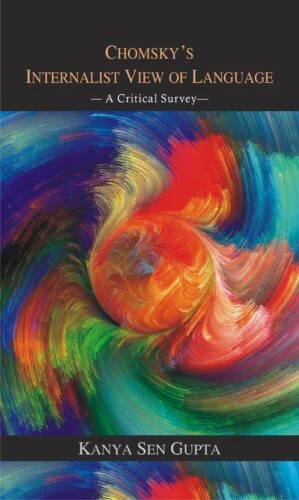
This book analyses Chomsky’s philosophy of language in the context of its difference from Wittgenstein’s account of language, and also other views of language which are in line with Wittgenstein explanation. And it aligns with the philosophy of Wittgenstein and his colleagues.
This volume endeavours to get at Chomsky’s philosophy of language in the context of its difference from Wittgenstein’s account of language, and also other views of language which are in line with Wittgenstein explanation. Since Chomsky’s preference is grammatical or structural approach to language, which is innate, he interprets knowledge of language as knowledge of rule-governing sentence formation. Obviously, Chomsky approves of Private Language with no concern for the theory of communication which is rooted in the use of language. In other words, Chomsky is not interested in successful communication which takes place only in social practices. But, according to what we have discussed in this book, successful communication or speech act is possible by what people normally do according to social convention.
In short, since Chomsky depends upon the structure or innateness of internalist approach to language, he cannot be accounted for social interpretation of language, which is needed for successful communication. As in this book, we are committed to public or socially approved language of Wittgenstein and his colleagues which is essential for communication, we walk away from Chomsky’s structural or mentalistic or innatist interpretation of language.

The book reinterprets some basic concepts of paramanu (atom), samanya (universal), ahamkara (the ego-principle) and karma as understood by the classical Indian philosophical systems the Nyaya-Vaishesikas, Samkhyas and the Buddhists. The articles explore the study of Aristotle’s Mean (Mesotes) and Buddha’s Middle Path (Majjhima Patipada).
Classical Indian Philosophy Reinterpreted consists of articles written by Victoria Lysenko and Michel Hulin two distinguished scholars of international repute on some basic concepts of classical Indian philosophy such as paramanu (atoms), samanya (universal), ahamkara (ego principle), and karma. These essays address important debates and issues that have arisen centering around Indian philosophical texts. In an essay an attempt has been made to resolve the apparent contradiction between the psychological and cosmic aspects of tattva in the scheme of the Samkhya dualism. One of the major contributions of this volume consists in situating Indian concepts from a comparative perspective as well. A comparative account of Aristotle’s Means (Mesotes) and Buddha’s Middle path (Majjihima Patipada) is illuminating. The notion of Christian reincarnation has also been compared and contrasted with the Indian concept of karma. The karmic principle has been interpreted as a mechanism for retribution and the link between karmic causality and the role of Ayurveda, the classical Indian science of medicine, has been explored and analysed. These essays share a common perspective in looking at philosophy from within the cultural traditions in which it grows. This book will be useful to researchers, academicians and other interested persons. Even a reader who is not familiar with classical Indian philosophical texts can form some idea about the rigour and thoroughness of Indian philosophical approach.
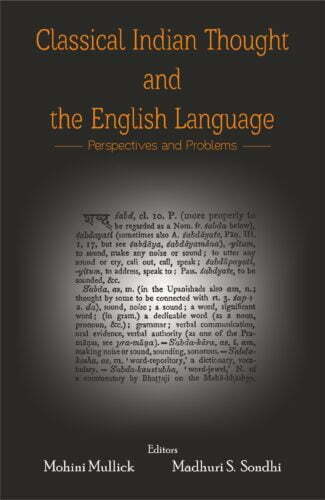
This book brings into focus the problems associated with conveying the central concepts and categories relating to some key areas of Indian classical thought through the well-established lexicons available in English, the language of power. It covers thus Epistemology, Ontology, Aesthetics, Moral Philosophy, Philosophy of Language, Religion and Logic, Political Theory, History, and Culture Theory from India and abroad.
This book is based on the proceedings of a Workshop held in 2011 on Rendering of the Categories of Classical Indian Thought in the English Language: Perspectives and Problems.
Although scientific texts appear to have successfully solved the problem by standardizing technical terms for all languages of instruction and communication, the problem of translation becomes acute when dealing with vocabularies of long standing belonging to ancient cultures, as is the case in India.
More urgently, we know that the thought worlds of ancient and medieval India are still very much alive and with us. Thus to even begin to understand contemporary India and its dilemmas, it is essential to come to grips with the foundational concerns, wisdom and follies of a civilization that has refused to die. What we find, however, is that when it comes to the understanding of our own thought traditions, their rendering into the English language in the colonial (and post-colonial) period, has only served to obscure the great cultural divide between the history of Western thought and our own.
The workshop thus aimed at bringing into focus the problems associated with conveying the central concepts and categories relating to some key areas of Indian classical thought through the well-established lexicons available in English, the language of power.
The multidisciplinary gathering included not only philosophers from the fields of Epistemology, Ontology, Aesthetics, Moral Philosophy, Philosophy of Language, Religion and Logic, but also specialists in the fields of Political Theory, History, and Culture Theory from India and abroad.
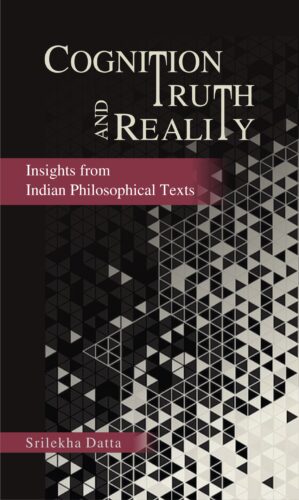
The book addresses various fundamental topics of philosophy in the area of epistemology and metaphysics like doubt, memory, perception, truth and validity, the self, consciousness and universals; and these are explored from the perspective of Indian philosophy.
“This book contains a number of essays on various fundamental topics of philosophy in the area of epistemology and metaphysics. Topics like doubt, memory, perception, truth and validity, the self, consciousness and universals are explored from the perspective of Indian philosophy. The discussion here is based on Indian philosophical texts which bear the evidence of analytical mind of the Indian thinkers and their critical approach to the subject. The author has suggested some new interpretation in some cases and offered some alternative solution to certain problems. These essays are the results of the author’s intensive study of the subject. This book will be useful for students and researchers. A survey of the opinions of different schools of philosophy on different topics can be found here and the scope for further research on those areas has also been shown.”
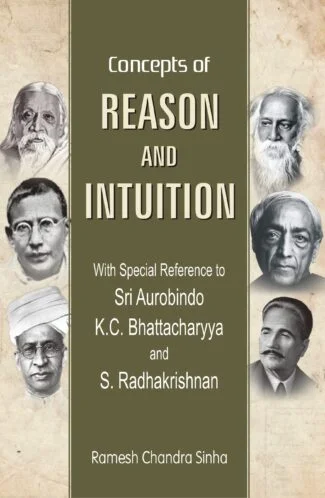
This book articulates the philosophical thought of the twentieth-century Indian philosophers Sri Aurobindo, K.C. Bhattacharyya and S. Radhakrishnan. It provides a profound understanding of Reason and Intiution while giving admirable understanding of other important metaphysical and religious problems.
This work is a systematic and critical study of two most important problems of philosophy Reason and Intuition. The philosophical thought of the twentieth-century Indian thinkers articulates fresh ideas. Though they accept the metaphysical doctrines of Vedànta, one finds a good deal of originality in their world-views. The great thinkers are fully aware that unless they interpret and formulate the traditional truths in the modern framework of ideas, they would cease to inspire. There seems to be a distinct change in their views concerning man’s existence in the world.
The book embodies a fresh approach towards critical evaluation of some theories and gives valuable insights. It attempts to make relevant comparisons of the views of Indian thinkers with those of some of the eminent thinkers of the West.
In the detailed study of Sri Aurobindo, K.C. Bhattacharyya and S. Radhakrishnan, the author shows, not only a profound grasp of the concepts of Reason and Intuition, but also the admirable understanding of other important metaphysical and religious problems.
This book cannot miss the sight of students of philosophy, researchers and scholars.

This book articulates the philosophical thought of the twentieth-century Indian philosophers Sri Aurobindo, K.C. Bhattacharyya and S. Radhakrishnan. It provides a profound understanding of Reason and Intiution while giving admirable understanding of other important metaphysical and religious problems.
This work is a systematic and critical study of two most important problems of philosophy Reason and Intuition. The philosophical thought of the twentieth-century Indian thinkers articulates fresh ideas. Though they accept the metaphysical doctrines of Vedànta, one finds a good deal of originality in their world-views. The great thinkers are fully aware that unless they interpret and formulate the traditional truths in the modern framework of ideas, they would cease to inspire. There seems to be a distinct change in their views concerning man’s existence in the world.
The book embodies a fresh approach towards critical evaluation of some theories and gives valuable insights. It attempts to make relevant comparisons of the views of Indian thinkers with those of some of the eminent thinkers of the West.
In the detailed study of Sri Aurobindo, K.C. Bhattacharyya and S. Radhakrishnan, the author shows, not only a profound grasp of the concepts of Reason and Intuition, but also the admirable understanding of other important metaphysical and religious problems.
This book cannot miss the sight of students of philosophy, researchers and scholars.
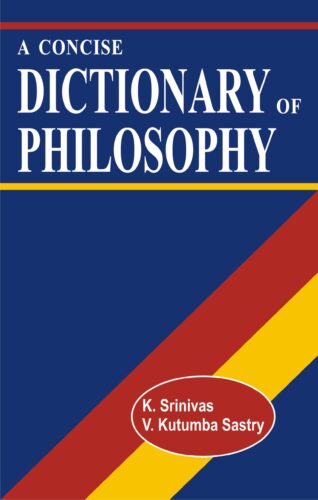
This dictionary serves as an immediate reference book to the teachers and the students of philosophy and also to the general readers. It covers as many as seventeen hundred entries that include the most commonly used philosophical terms of the East and the West and the brief biographies of prominent philosophers of the Orient as well as the Occident.
This dictionary serves as an immediate reference book to the teachers and the students of philosophy and also to the general readers. It covers as many as seventeen hundred entries that include the most commonly used philosophical terms of the East and the West and the brief biographies of prominent philosophers of the Orient as well as the Occident.
| There are no products |